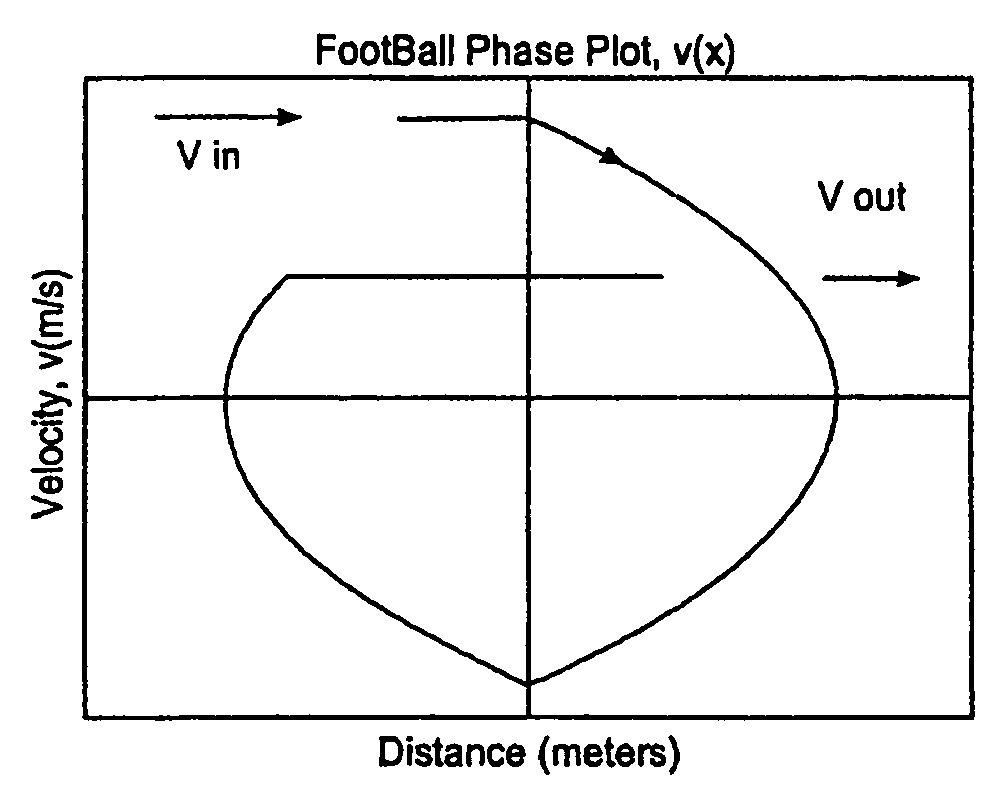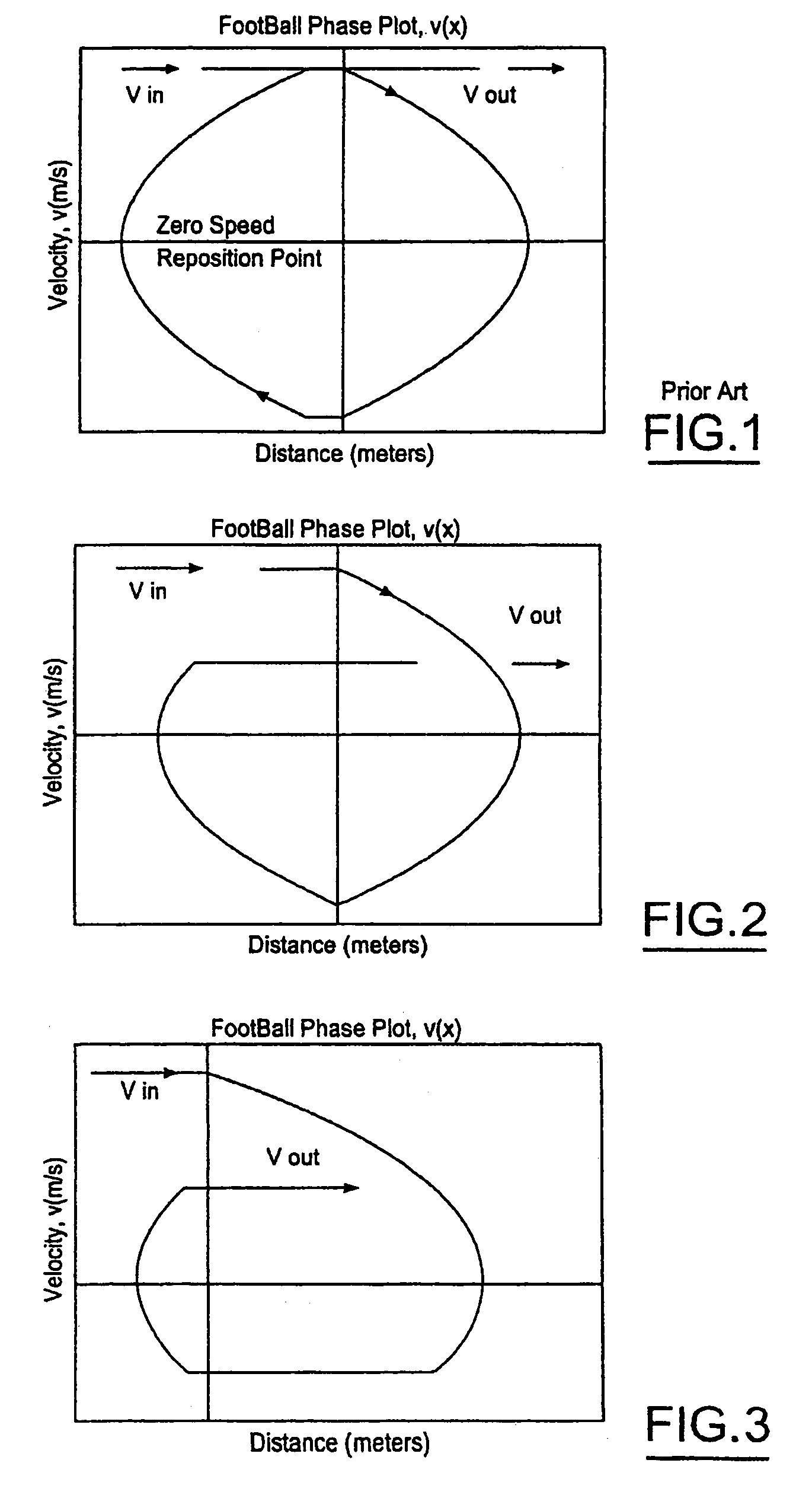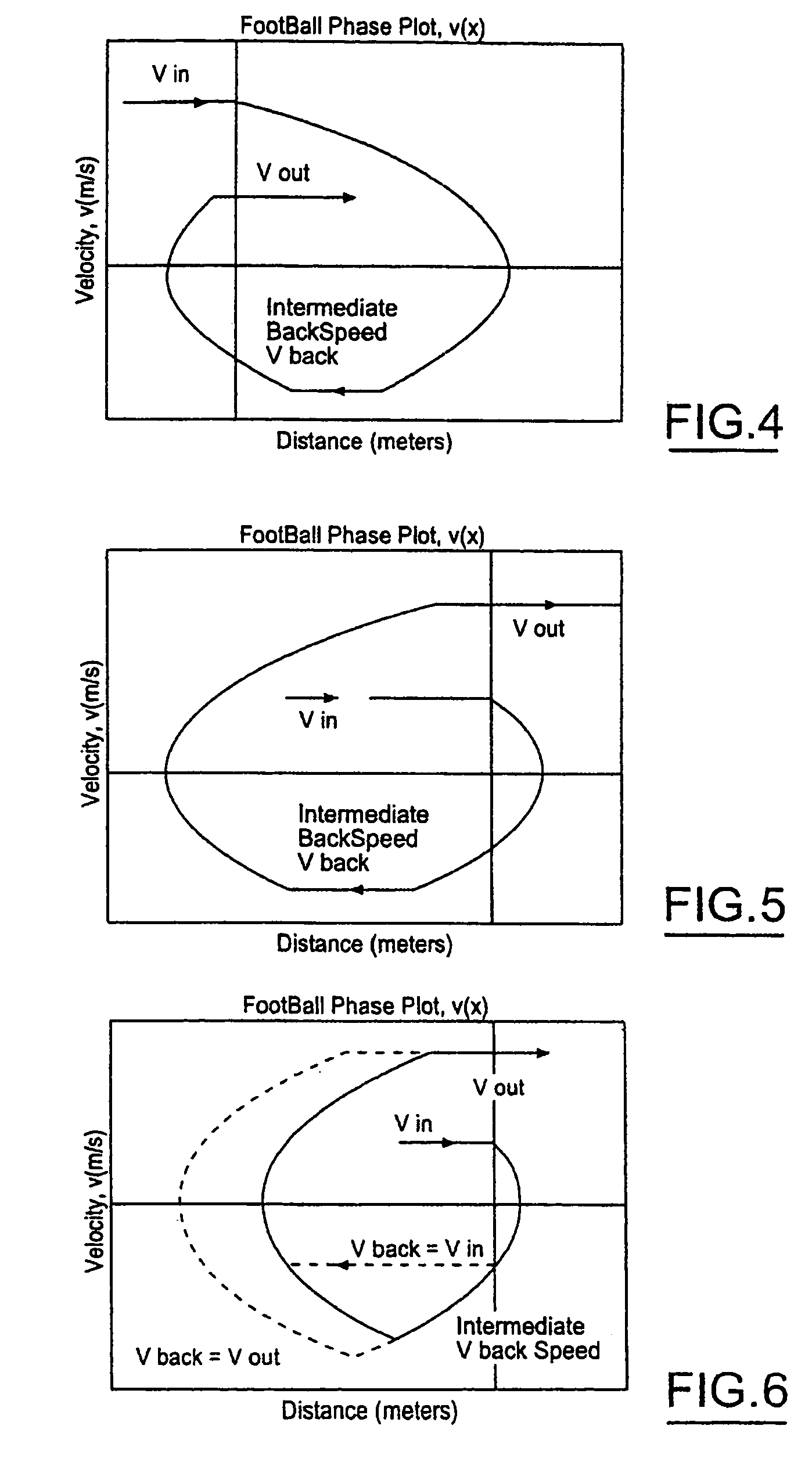Reduction of tape velocity change backhitch time through use of an intermediate back velocity
a technology of backhitch time and tape velocity, applied in the field of optimizing tape velocity changes, can solve the problems of reducing the backhitch time, affecting the quality of tape, so as to reduce the backhitch time and improve the performance. , the effect of high performan
- Summary
- Abstract
- Description
- Claims
- Application Information
AI Technical Summary
Benefits of technology
Problems solved by technology
Method used
Image
Examples
Embodiment Construction
[0032]For the elementary case of both acceleration and deceleration having a constant magnitude, the optimal back velocity is found by taking the derivative of the total time with respect to the back velocity, setting it to zero, and solving for the unknown optimal back velocity that gives minimal time. For example, optimal back velocity may be: τva+12(V2+v2),
where V is V_in, v=V_out, a=acceleration (m / s / s), and τ=settling time. In other cases, acceleration may not be constant, and the optimal back velocity can be found via spreadsheet or by solving non-linear equations. Plots of total football time versus possible intermediate back velocities will show a U shape between V_back=V_in and V_back=V_out. The shape may not be symmetrical and could be more sudden on one side than on the other. In that case, it may be desirable to select a back velocity away from the steep side so that total time is more robust against variations in actual execution of the football. A simple choice of b...
PUM
| Property | Measurement | Unit |
|---|---|---|
| velocity | aaaaa | aaaaa |
| tape velocity | aaaaa | aaaaa |
| flexible | aaaaa | aaaaa |
Abstract
Description
Claims
Application Information
 Login to View More
Login to View More - R&D
- Intellectual Property
- Life Sciences
- Materials
- Tech Scout
- Unparalleled Data Quality
- Higher Quality Content
- 60% Fewer Hallucinations
Browse by: Latest US Patents, China's latest patents, Technical Efficacy Thesaurus, Application Domain, Technology Topic, Popular Technical Reports.
© 2025 PatSnap. All rights reserved.Legal|Privacy policy|Modern Slavery Act Transparency Statement|Sitemap|About US| Contact US: help@patsnap.com



